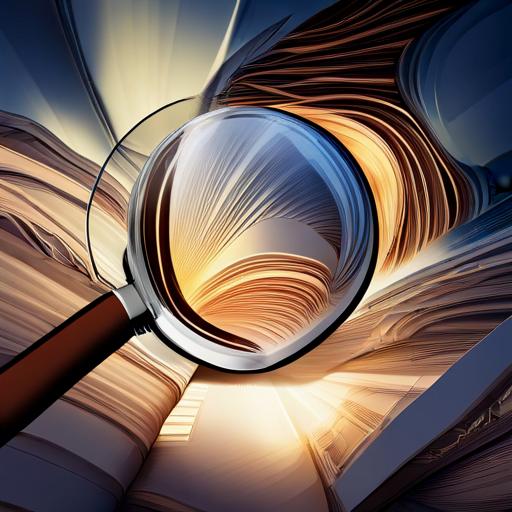Are you struggling to understand the deeper meaning behind a text? Do you find yourself reading and rereading passages, but still feeling unsure about what the author is trying to convey? If so, you may benefit from the practice of close reading.
Close reading is a method of analyzing texts that involves examining every detail, from word choice to sentence structure, in order to extract key information and develop a deeper understanding of the text. By engaging in close reading, you can uncover themes, motifs, and other important elements that may not be immediately apparent upon first glance.
This process requires patience, attention to detail, and a willingness to dig deeper into the text. In this article, we will explore the purpose of close reading, as well as the key elements and techniques involved in this practice. Whether you are a student, a writer, or simply someone who enjoys reading, close reading can help you develop a more nuanced understanding of the texts you encounter.
Table of Contents
Understanding the Purpose of Close Reading

You’ll learn why it’s important to really dig into what you’re reading and figure out what the author is trying to say. Close reading is all about analyzing the text, extracting key information, and understanding the purpose behind it all.
When you dive into a text and start to examine it more closely, you’ll gain a deeper understanding of the author’s intentions and the message they’re trying to convey.
Close reading is an essential skill for anyone who wants to truly understand what they’re reading. It allows you to pick up on subtle nuances, identify themes and motifs, and gain a deeper appreciation for the text as a whole.
By understanding the purpose of close reading, you’ll be able to approach any text with a critical eye and uncover the hidden meaning behind the words.
Identifying Key Elements in a Text

You can better understand what a text is really saying by picking out the most important parts and focusing on those. To do this, you need to identify the key elements in the text.
These elements can vary depending on the type of text you’re reading, but some common ones include the main idea, supporting details, tone, and style.
The main idea is the central point of the text, and everything else in the text should support or relate to this idea. Supporting details help to explain or prove the main idea, while tone refers to the author’s attitude or feelings towards the subject matter.
Style refers to the way in which the author has written the text, such as the use of language, sentence structure, and rhetorical devices.
By identifying and analyzing these key elements, you can gain a deeper understanding of the text and what the author’s trying to convey.
Analyzing Textual Structure and Style

Take a closer look at how the author has structured and written the text to gain a deeper understanding and make the reading experience more engaging. Analyzing the textual structure and style can help you identify the author’s purpose, tone, and point of view. It can also reveal the patterns of language used, the use of figurative language, and the use of literary devices such as imagery, metaphors, and similes.
When analyzing the structure of the text, pay attention to the way the author has organized the information. Look for headings, subheadings, and paragraph breaks. These can help you identify the main ideas and supporting details. Additionally, notice how the author transitions from one idea to the next. Are there any key words or phrases that signal a shift in focus or a change in tone?
By examining the structure and style of a text, you can gain a deeper understanding of the author’s message and appreciate the artistry of their writing.
Uncovering Themes and Motifs

You’re going to uncover the themes and motifs within the text by paying attention to the recurring ideas and symbols that appear throughout, giving you a deeper understanding of the author’s message.
Themes are the underlying messages or ideas that the author is trying to convey, while motifs are the recurring symbols or images that help to develop those themes. By identifying these elements, you can gain a better understanding of the author’s intentions and the message they’re trying to communicate.
To start uncovering the themes and motifs, you can begin by identifying any patterns or repetitions within the text. This could include recurrent ideas, phrases, or images that appear throughout the work.
Once you’ve identified these patterns, you can start to think about how they contribute to the overall meaning of the work. Ask yourself questions like: What is the author trying to say with this recurring image? How does this idea contribute to the larger themes of the work?
By answering these questions, you can begin to piece together the author’s message and develop a deeper understanding of the text.
Developing Insights and Interpretations

Let’s dive into developing our own unique insights and interpretations of the text by examining the themes and motifs we’ve uncovered.
Now that we’ve identified the recurring patterns and symbols in the text, it’s time to analyze their meaning and significance. Ask yourself, what do these themes and motifs reveal about the characters, the setting, and the overall message of the text?
To develop your insights and interpretations, consider the context of the text, both historical and cultural. What societal issues or values are being explored or challenged? How do the characters’ experiences reflect or diverge from those of their time period or cultural background?
Additionally, pay attention to the author’s use of language, imagery, and symbolism. What emotions or ideas do they evoke? How do they contribute to the overall tone and atmosphere of the text?
By answering these questions and delving deeper into the themes and motifs, you can form your own unique interpretation of the text and gain a deeper appreciation for its complexity and depth.
Conclusion
By understanding the purpose of close reading, you’re able to identify key elements in a text, analyze textual structure and style, and uncover themes and motifs. With these skills, you’re now able to develop insights and interpretations that deepen your understanding of the text and its significance.
Continue to practice close reading and analysis in your reading and writing, and you’ll become a skilled reader and writer. Remember to pay attention to details, ask questions, and make connections as you read.
With practice and patience, you’ll be able to extract meaning and significance from even the most complex texts. Keep up the good work!
